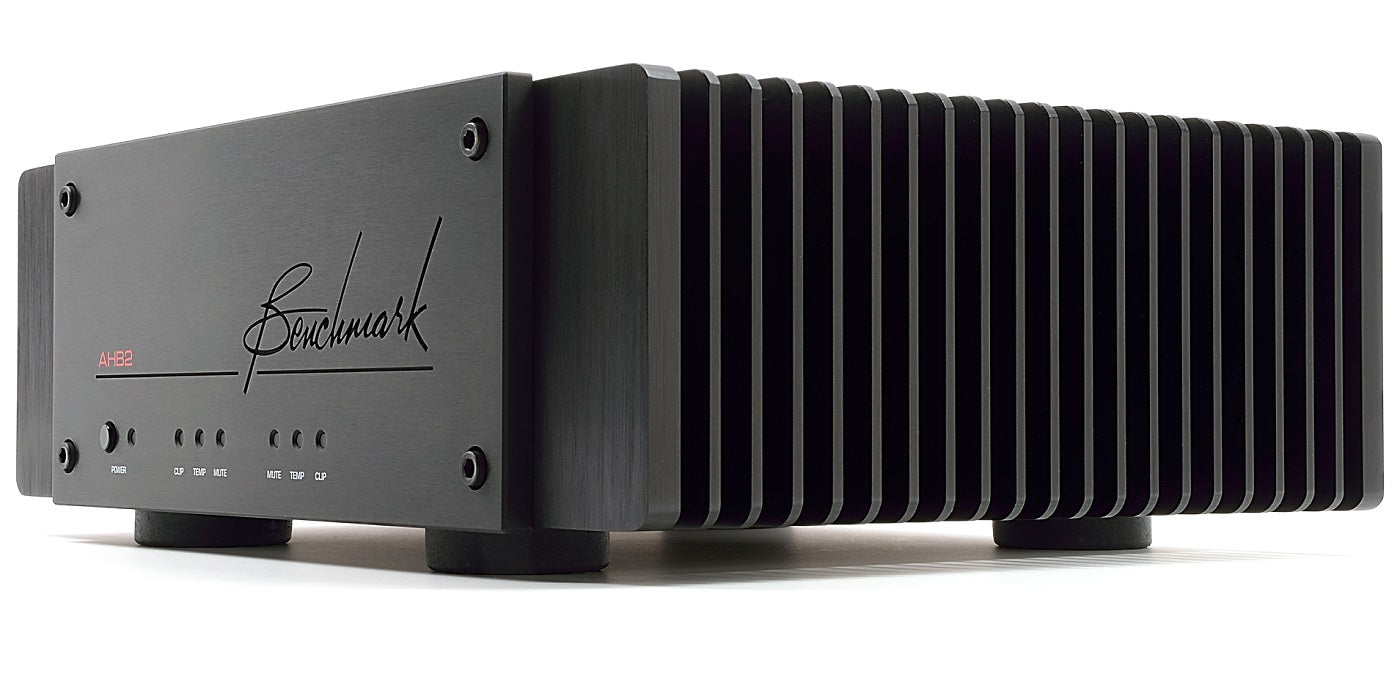Buy one component and save 10% on up to 2 cables. Buy 2 components and get 4 free cables. Free shipping on USA orders over $700.
Buy one component and save 10% on up to 2 cables. Buy 2 components and get 4 free cables. Free shipping on USA orders over $700.
THD+N Audibility Calculator
by Benchmark Media Systems November 16, 2022
Will the THD+N produced by my system be audible?
This is a difficult question to answer because harmonic distortion can resemble the harmonic overtones created by musical instruments (including the human voice).
Masking
The distortion produced by electronics may be hidden by similar harmonic content that is naturally produced by the musical instruments. However, if the distortion level is too high, the musical instruments will begin to sound different than they do live. The distortion threshold, where an instrument begins to sound different, will vary significantly depending on the instrument, and on the complexity of the musical performance. The best that we can say is that the system distortion may be masked by music.
If the masking is partial, the distortion can change the sound of the instruments, change the apparent EQ of the recording, blur the stereo image, and add clutter and confusion to the overall presentation.
When Masking Fails
Certain instruments are very difficult to reproduce because the overtones produced by the instrument are not exactly the same frequency as the harmonic distortion produced by electronics. These electronically produced harmonics are poorly masked when they beat against the overtones produced by the instrument.
The piano is particularly difficult to reproduce since the overtones are stretched slightly above integer ratios to the fundamental tone. These stretched overtones beat against the exact integer ratios produced by electronic systems.
Music is also much less effective at masking non-harmonic distortion such as IMD, jitter sidebands, and digital aliasing. These non-harmonic non-musical distortion components have no correlation to the overtones that are naturally produced by musical instruments. Consequently, these forms of distortion are much easier to hear when playing music.
Music Cannot Mask Idle Channel Noise
Music has absolutely no ability to mask idle channel noise, because this is noise that is present when the music is not playing.
But, Audible Noise may Partially Mask the Music
System noise may not be noticeable while the music is playing, but it may still obscure some of the low-level details in the recording. In other words, the system noise can partially mask the music if the noise is too high.
Absolute Inaudibility - 0 dB SPL - No Masking Required!
There is a threshold at which noise and distortion are absolutely inaudible. This occurs when the noise plus distortion is reproduced at a level that is below the threshold of hearing at the listening position. The threshold of normal hearing is about 0 dB SPL. Therefore, if we can reduce the system noise and distortion to these levels, we are no longer dependent on masking. In other words it would be impossible to hear the distortion plus noise, even if we could play these while the music is off.
Achieving THD+N below 0 dB SPL is Possible!
Reducing the electronically generated THD+N to levels below 0 dB SPL is entirely possible with today's technology. In fact, all Benchmark electronic audio products are designed to keep the electronically produced THD+N at or below 0 dB SPL. The combined THD+N contribution of the DAC, preamplifier, and power amplifier will be less than 0 dB SPL at the listening position. This calculator can be used to confirm this fact. It can also be used to determine how low THD+N needs to be in order to achieve absolute inaudibility.
THD+N that we cannot control
The only remaining distortion will be the distortion produced by the loudspeakers (definitely audible) and the distortion plus noise in the recording (often audible). When the playback electronics are clean, variations in recording quality are quite noticeable. Likewise, the differences between speakers are also more noticeable.
Using the Calculator
- Enter the THD+N of the worst component in your signal chain.
- Enter the voltage sensitivity of your speakers.
- Enter the rated output power of your amplifier.
- Choose your listening configuration.
- View the result!
- If the result is less than 0 dB SPL, the THD +N produced by your electronics will be absolutely inaudible.
Step 1 - Use this calculator to convert THD or THD+N from percent to dB (if necessary)
Step 2 - Use this calculator to compute the sound pressure level (SPL) of THD or THD+N
Advanced Use
- Enter SNR (as a negative number) instead of THD+N to see if your system will generate audible idle channel noise.
- Enter THD instead of THD+N to see if your system will generate distortion that exceeds 0 dB SPL.
- Enter the THD of your speakers to see how loud this will be at your listening position.
Video Tutorial
Our calculators were featured in a video at Erin's Audio Corner. Erin discovered one of our other calculators (Peak SPL) and liked it so well that he discussed it in the following YouTube video. The calculator above is very similar, but it adds an input field for THD+N. This extra input field allows the calculation of peak THD+N, while simultaneously calculating peak SPL.
Revised: 8/13/2025
Leave a comment
Comments will be approved before showing up.




